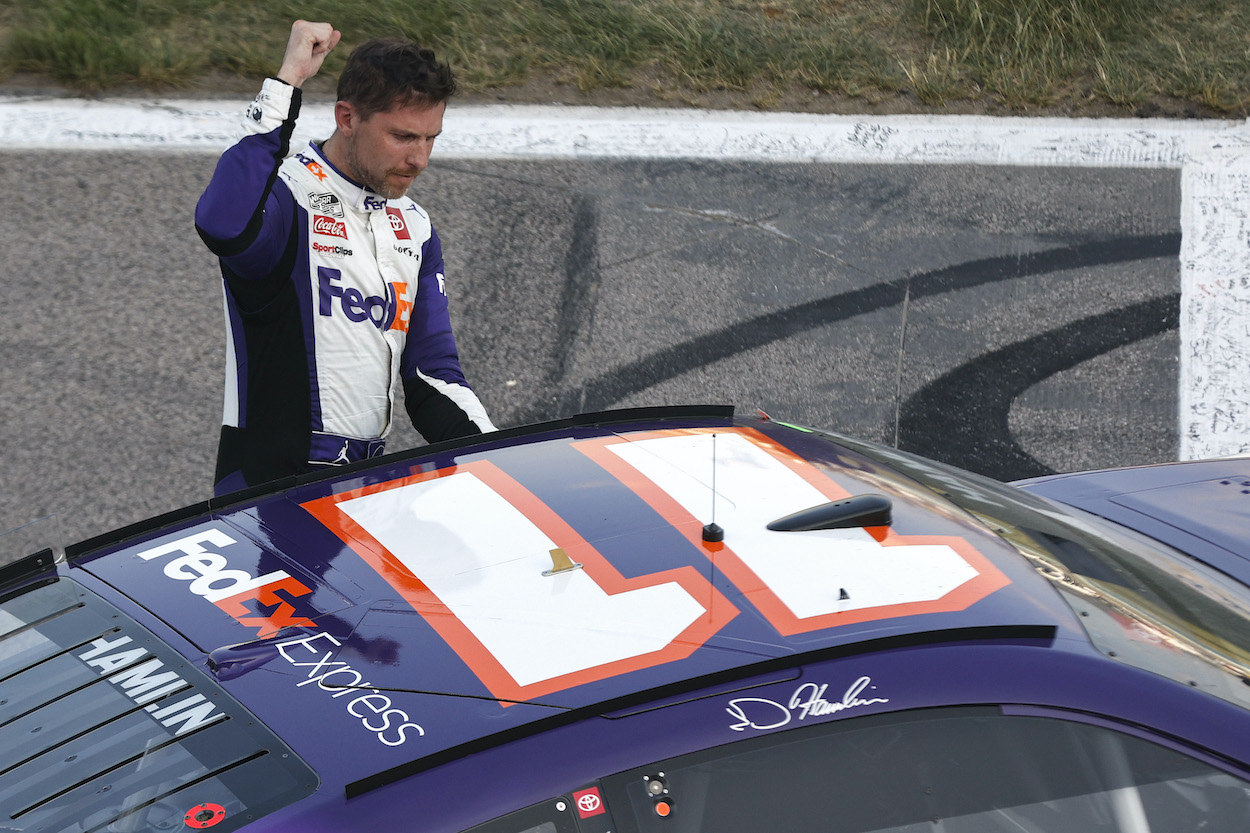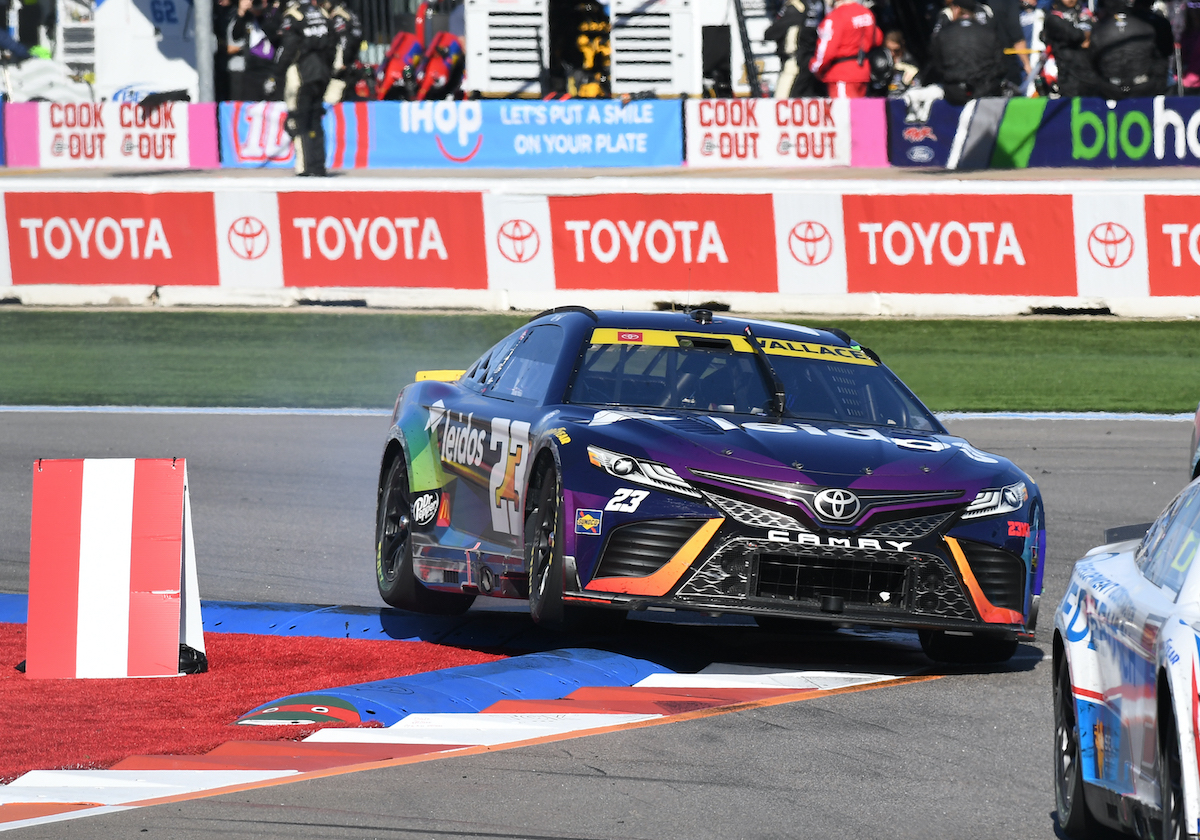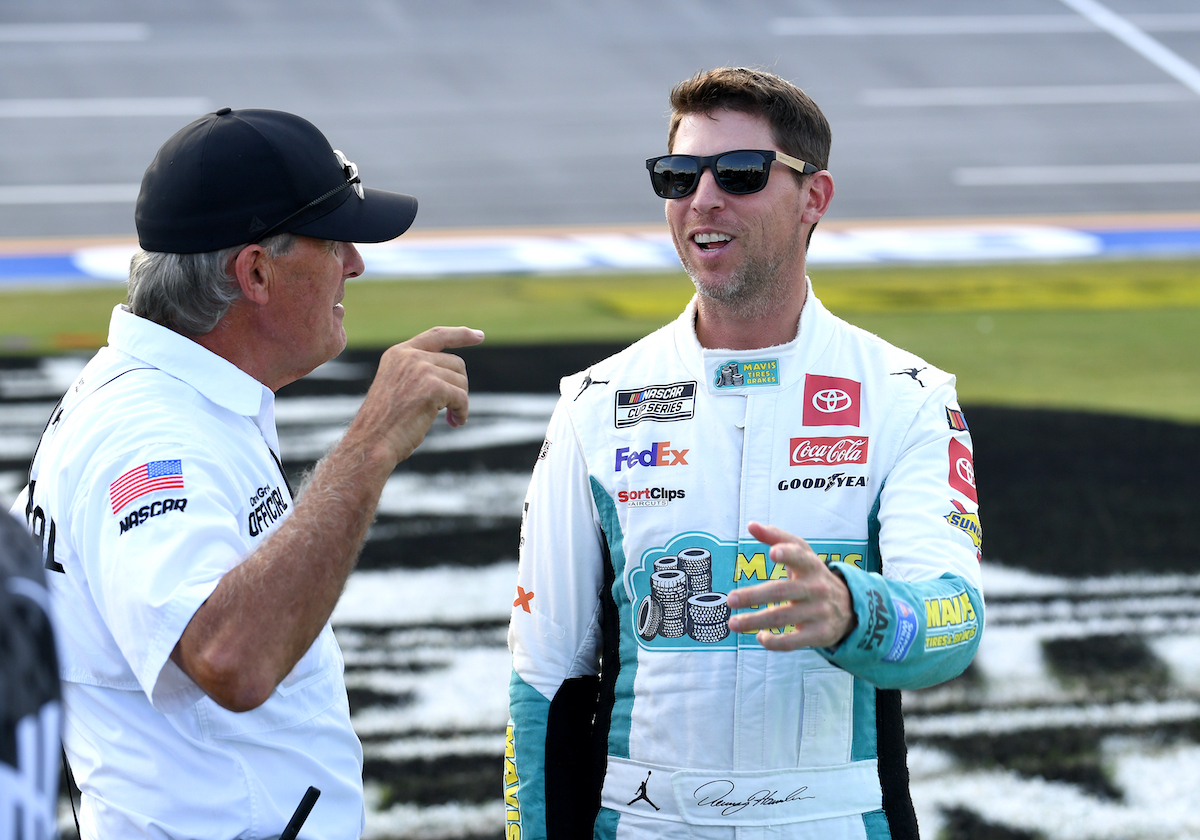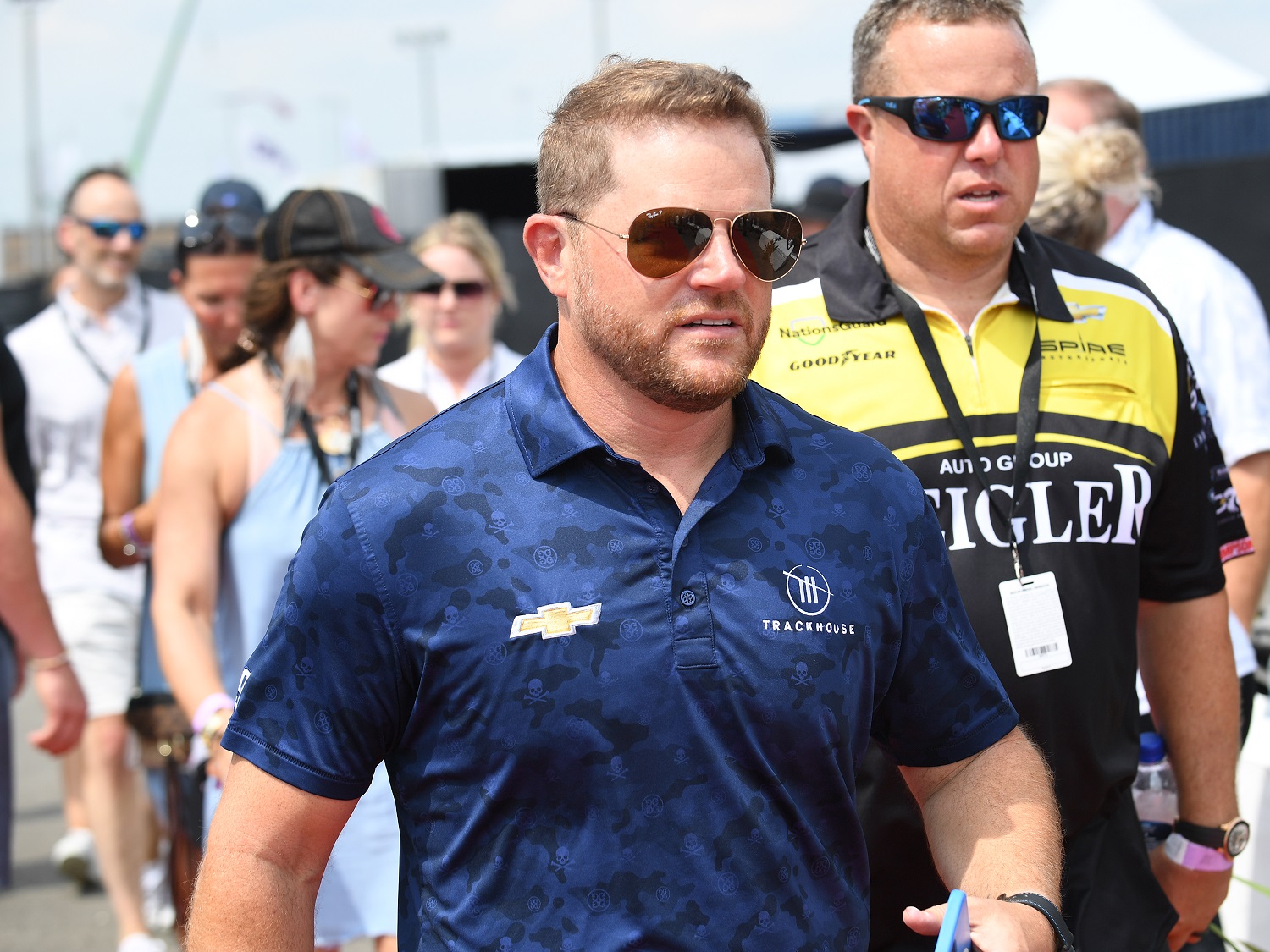
Justin Marks Worries a Key Next Gen Advantage Hasn’t Materialized
Season 2 of life in the NASCAR Cup Series could not be going better for Trackhouse Racing. Co-owner Justin Marks’ team has already banked two victories by Ross Chastain and one by Daniel Suarez, elevating the organization into the championship conversation.
It’s an astonishing ascent for a young team. Credit Marks’ vision and execution after buying out Chip Ganassi Racing, as well as the organization’s ability to adapt to the Next Gen car better than just about anyone else.
Still, Marks sees a problem that can slow the trajectory. If NASCAR can’t resolve it in the coming months, then race fans can kiss the newfound Cup Series parity goodbye.
The Next Gen car has delivered on one major intent
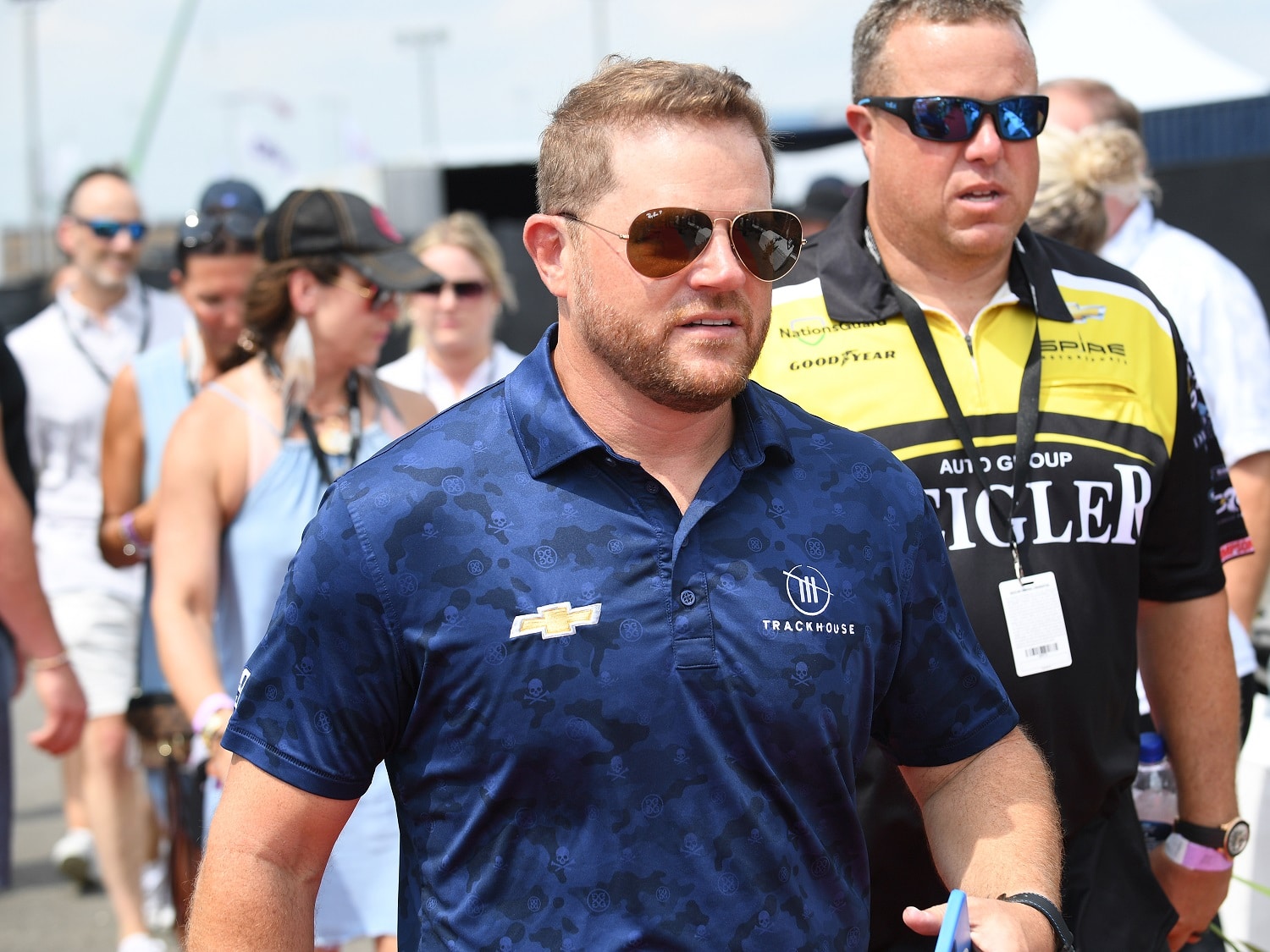
Austin Cindric. Chase Briscoe. Ross Chastain. Daniel Suarez.
That’s the list of drivers who’ve scored their first NASCAR Cup Series victory this season. Don’t rule out Tyler Reddick joining the list in the next four months.
Eighteen months ago, wagering on any of them scoring their breakthrough in 2021 or ’22 probably would have gotten the bettor odds of 25-to-1 or higher. But this is Year 1 of a new era in which the Next Gen car has leveled the playing field. Yes, Hendrick Motorsports still rules, but Trackhouse Racing has soared into contention, and other new or lesser-regarded teams have chalked up successes, too.
The new car has arrived as part of a paradigm shift in which teams assemble NASCAR-supplied parts rather than fabricate their own. We don’t have absolute parity, but the general level of competitiveness has improved from the final years of the Gen 6 car.
Justin Marks worries a key Next Gen promise hasn’t panned out
NASCAR Cup Series teams’ conversion to the Next Gen car came with a promised trade-off: short-term financial pain to retool but a car cheaper to run over time. Thus far, however, Trackhouse Racing co-owner Justin Marks is only seeing the first half of the equation while holding out hope and figuring out what to do with 46 leftover Gen 6 cars.
“At this point it’s not cheaper. It’s not. It’s just a different expense-line item,” Marks told Dale Earnhardt Jr. on the Dale. Jr. Download podcast. “I think we’ll get there, We’re 17 races in, we can’t expect an instant sort of reset.”
The money previously spent on parts fabrication is now spent on replacements. NASCAR isn’t letting teams simply pound out dents on panels and refurbish interior components.
“The car is very expensive and the parts are very expensive. And we’re crashing it a lot,” said Marks, who’ll drive in an SRX race Saturday in Connecticut. “Cautions are up 72% or something like that this year because a lot of the drivers are driving these cars like they’re the old cheap cars. They’re just sending it. And one of the issues is, it’s very, very expensive to fix.”
A simple example:
“Guys are still racing them like their Late Models or something. And that’s going to become a problem for these teams. You know that the underbody on these cars costs $28,000? And every time you get doored at Martinsville or anywhere, you’ve got to replace the left side. That’s like 7,500 bucks. It used to be a steel door.”
Justin Marks
Justin Marks expects improvements in Year 2 and beyond
In discussing the high start-up costs for the Next Gen car in the NASCAR Cup Series, Justin Marks said he expects vendors will be able to develop cheaper parts down the road. The combination of the late start in manufacturing after Next Gen testing plus supply-chain disruptions makes it impossible for now. Add in fuel costs and inflation in general, and it’s likely most teams are over budget in 2022.
Trackhouse Racing has tried to mitigate those factors by staying disciplined. When order banks opened for the Next Gen car, teams could order more of certain parts than they needed. Justin Marks said he questioned why 15 parts showed up at the shop when the team required fewer to get started.
“Can you get in a van, drive down there and buy it on any day of the week?” he asked. “Yeah? Well, we’re gonna buy five. because we’re not going to be the bank for the vendors. … That’s not being cheap. It’s being efficient. They’re two different things.”
Like Sportscasting on Facebook. Follow us on Twitter @sportscasting19 and subscribe to our YouTube channel.
